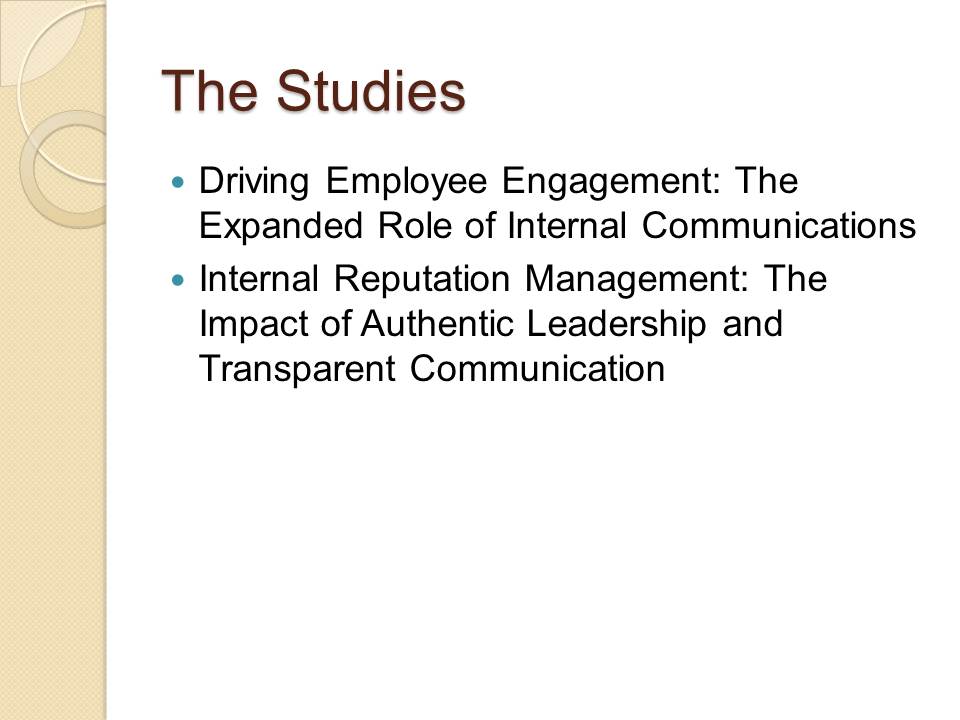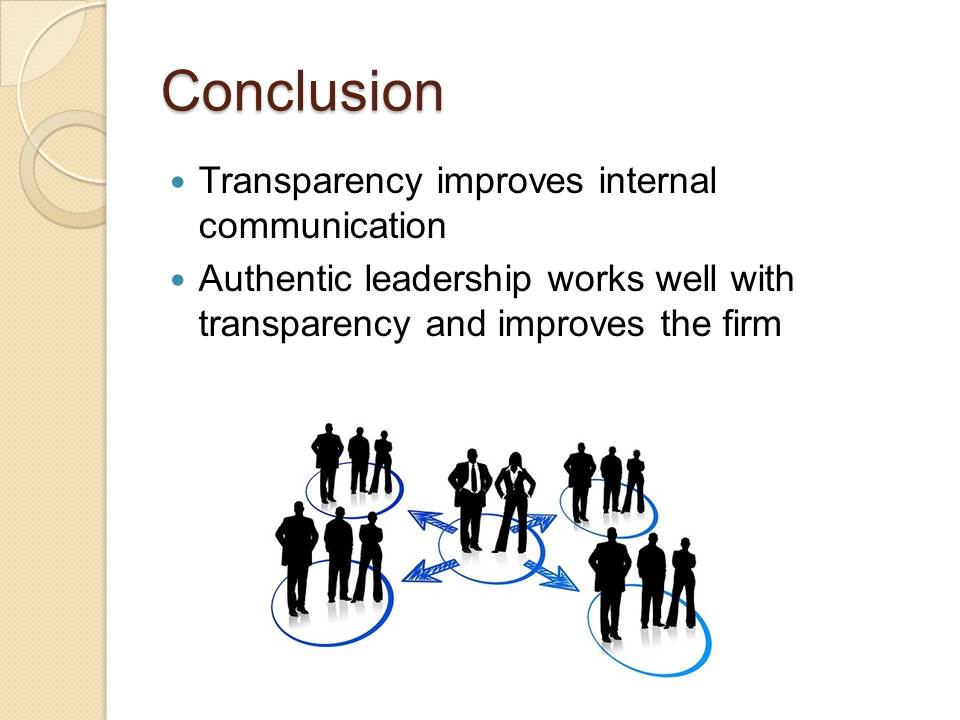The Studies
- Driving Employee Engagement: The Expanded Role of Internal Communications;
- Internal Reputation Management: The Impact of Authentic Leadership and Transparent Communication.
This presentation will cover two articles concerned with internal communication. The first article, “Driving Employee Engagement: The Expanded Role of Internal Communications” by Karen Mishra, Lois Boynton, and Aneil Mishra, was first published in 2014. Its focus is on the importance of strengthening internal communication. It covers how internal communication can lead to a culture of transparency within the company, with the final goal of engaging employees in the priorities of the organization. This study examines different strategies that executives use to improve internal communication (Men, 2014).
The second study, “Internal Reputation Management: The Impact of Authentic Leadership and Transparent Communication” by Linjuan Rita Men, was also published in 2014. It covers the effects of transparency and authentic leadership on employee evaluation of the organization. Through a survey of 400 employees, it analyzes the day-to-day effects of transparent communication and authentic leadership (Mishra, Boynton, & Mishra, 2014).

Transparency
- Employees feel more engaged;
- Increased trust in the firm;
- Frontline managers with communication skills.
Both articles find that internal communication greatly improves when a culture of transparency is cultivated within the company. The studies show that transparency in internal communication benefits both the employees and the firm. Employees of such firms are more engaged than those who work at less-transparent companies. They are more likely to have trust in their supervisor and company and feel like they can build relationships with customers on the firm’s behalf. Both studies recommend using internal communication professionals and training frontline managers to have strong communications skills. This tactic helps carry out the communication plans of the organization. These managers need to understand all the channels provided to them. Employees respond better to information given to them through their preferred channel (Men, 2014; Mishra et al., 2014).

Authentic Leadership
- Strong positive effect on company reputation among employees;
- Increased effect when coupled with transparent communication;
- Strong moral values;
- High accountability.
Unlike the first article, the second looks at the effect of authentic leadership on internal communication. Its authors find that authentic leadership has a strong positive effect on the reputation of the company among employees. Subsequently, this type of leadership has an even greater effect when transparent communication is used within the company. This supports the information from the first study about the increased trust of employees in the company. Additionally, authentic leadership brings a variety of positive traits to the company. For example, when leaders show strong moral values, they inspire confidence in the employees, as well as morally driven actions by the team. Also, this type of leadership provides high accountability for the leader, which makes the whole firm more accountable (Mishra et al., 2014).

Conclusion
- Transparency improves internal communication;
- Authentic leadership works well with transparency and improves the firm.
These studies have shown that internal communication could be greatly improved through the use of different communication techniques. One of the most important aspects present in both articles is transparency. Transparency creates a culture of trust within the company. When employees trust their supervisor and manager, they are much more likely to meet the goals of the company.
The second technique proposed by these articles is the use of authentic leadership. This type of leadership has shown to be highly effective when employed along with transparent communication. An authentic leader can inspire the team through strong moral values and high accountability.
By using these two tactics, companies should be able to create effective internal communication.

References
Men, L. (2014). Internal reputation management: The impact of authentic leadership and transparent communication. Corporate Reputation Review, 17(4), 254–272.
Mishra, K., Boynton, L., & Mishra, A. (2014). Driving employee engagement. International Journal of Business Communication, 51(2), 183–202.